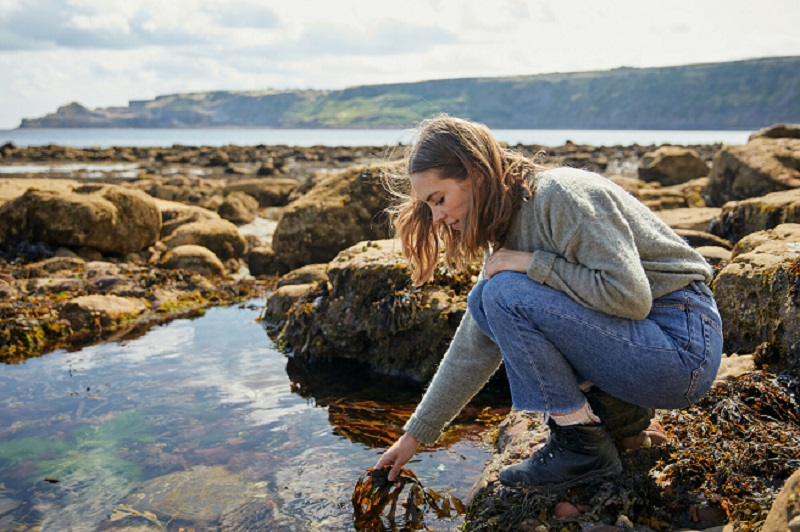Our rugged stretch of coastline is the best place in Northern England to find Jurassic fossils, dinosaur footprints or hunt for all manner of wildlife in rockpools.
The geology of the National Park tells a story that stretches back around 200 million years. The beauty of this story can be seen today along our shores. Any of our sea cliffs are worth a visit, but the cliffs around Runswick Bay and Robin Hood’s Bay are especially rewarding for amateur geologists to explore.
Look out for fossils and dinosaur footprints at Runswick Bay, Ravenscar, Saltwick Bay and Whitby to spot ammonites, giant seaweed, old sponges and even shark egg cases! Or join one of The Fossil Shop's fossil hunts, rock pooling trips and dinosaur footprint walks to discover even more secrets of the National Park’s coastline.
The smugglers’ bolthole of Robin Hood’s Bay is a goblin hotspot – how else to explain the rocky cove known as Boggle Hole, a mile south along the shore from the village? Head to the Old Coastguard Station to pick up a Family Tracker Pack and go on a fossil hunt on the beach once the tide goes out. The rucksack also contains information for carrying out a rockpool recce or a spot of bird watching. There are games and ideas in the activity leaflet, which you can take home as a memento of your fun-filled day on the coast.
There's plenty of rock hopping to be done at Hayburn Wyke too or try and spot the different types of seaweed and wildlife that live in the rockpools.
And don't forget... one of the best places in the country for beachcombing is at Runswick Bay!

Responsible fossil hunting
Fossil hunting is great fun but please do follow our guidelines to prevent any unnecessary damage to our natural heritage.
- Look for fossils in loose beach material
- Only collect a small number
- Keep detailed records (what, where, when)
- Keep hammering to a minimum
- Avoid disturbance to wildlife
- We always recommend that you check local tide times. You can buy a copy of the tide timetable at various shops up and down the coast. Find it in The Baytown Chronicle magazine or check the tide times online. Set out at least an hour before low tide to give yourself enough time to walk out and explore before heading back.
Stay well away from the base of steep cliffs and wear appropriate footwear and clothing. Check all The Yorkshire Fossil-Finder’s Guide for helpful tips.
